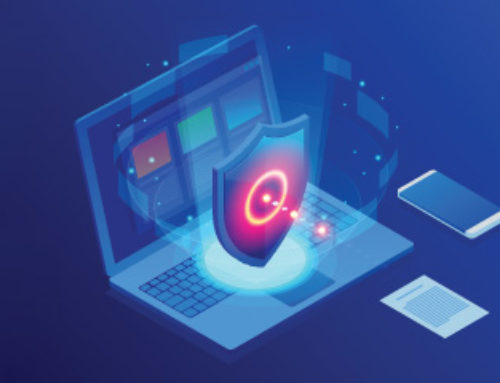[fusion_builder_container hundred_percent=”no” equal_height_columns=”no” menu_anchor=”” hide_on_mobile=”small-visibility,medium-visibility,large-visibility” class=”” id=”” background_color=”” background_image=”” background_position=”center center” background_repeat=”no-repeat” fade=”no” background_parallax=”none” parallax_speed=”0.3″ video_mp4=”” video_webm=”” video_ogv=”” video_url=”” video_aspect_ratio=”16:9″ video_loop=”yes” video_mute=”yes” overlay_color=”” video_preview_image=”” border_size=”” border_color=”” border_style=”solid” padding_top=”” padding_bottom=”” padding_left=”” padding_right=””][fusion_builder_row][fusion_builder_column type=”1_1″ layout=”1_1″ background_position=”left top” background_color=”” border_size=”” border_color=”” border_style=”solid” border_position=”all” spacing=”yes” background_image=”” background_repeat=”no-repeat” padding_top=”” padding_right=”” padding_bottom=”” padding_left=”” margin_top=”0px” margin_bottom=”0px” class=”” id=”” animation_type=”” animation_speed=”0.3″ animation_direction=”left” hide_on_mobile=”small-visibility,medium-visibility,large-visibility” center_content=”no” last=”no” min_height=”” hover_type=”none” link=””][fusion_text columns=”” column_min_width=”” column_spacing=”” rule_style=”default” rule_size=”” rule_color=”” hide_on_mobile=”small-visibility,medium-visibility,large-visibility” class=”” id=”” animation_type=”” animation_direction=”left” animation_speed=”0.3″ animation_offset=””]
It is not so long ago that both parents and teachers (certainly not the children themselves!) were suspicious about allowing computers into the learning environment. There has tended to be a Luddite sensibility which, thankfully, has now been turned inside out as the professionals and parents alike have realised that our children are thriving because the modern world has been allowed into the classroom and they can now be prepared for the expectations of colleges, universities, employers and the social world around them.
Here are the five main reasons why we cannot do without computers in our schools:
1. Digital technology is an intrinsic part of everyday life and work and the classroom should reflect this
Computers, technology and the whole world of ICT have been integrated into the classroom learning environment. More than just a tool to aid learning, information, data gathering and presentation – the recent UK government guidelines now dictate the mandatory inclusion of the science of computer coding in the national curriculum. ICT in the classroom has become essential in the 21st century to enable an all-round education for our children facing the new digital age.
Teachers are better equipped when it comes to manipulating technological devices as they are taught in their own training how to access effective tools and school funders are offered creative ways to meet the ever-increasing funding demands on IT.
2. Computer and teaching have evolved to negate fears that computers would prevent children thinking for themselves
Digital technology has fully integrated into western society. Whereas only a decade ago it was a luxury for the few, now the majority of families use mobile phones, or computer devices to communicate, gather information through the internet and answer questions instantly.
The internet has become the largest informational database in the world and is also more accessible than a library textbook or Encyclopaedia Britannica – this therefore needs to be reflected in the classroom. Effective teaching skills along with astute structured class sessions can help police and monitor how fundamental learning takes place. The newer eLearning facilities are especially designed to ensure it is the child who is using their own capacities, talents and skills to provide solutions to educational projects.
3. New computer devices enhance teacher-pupil interaction rather than prevent it
The core of teacher training is the principle of the relationship between teacher and child. It is only when the child interacts with the teacher that she or really begins a learning process and the teacher is able to access the child’s progress. There was a fear when computers arrived in the classroom, that they would hamper teacher pupil interactions – even make them redundant.
As computer devices have developed from simple desk tops and laptops and the need for ICT in education has become fundamental to learning so eLearning and the devices themselves have become designed and developed with education in mind – so technology actually assists the teacher when interacting with their classes. A great example of this is the Front Panel display which allows for children to directly manipulate learning materials either as a group or individually.
4. Robust school policy and internal school networks can police use of computers
Mobile phones – the tiny computer in your pocket – have created the most worries here as children text and post when they should have more focus on the lesson. Also tablets and laptops offer an almost unlimited supply of entertainments at the click of a button. There is a darker side to the internet which parents would not want their children to access and there is often a feeling that unsupervised use will put them at risk.
In answer to many of these issues schools have facilitated new policies for ICT assets to meet the problem. Some schools have banned mobiles altogether while others restrict use to certain areas or times within the school day. As more and more schools fund their own iPads and mobile devices they are able to use “nanny” applications to prevent children accessing websites outside of school curriculum material. Devices can also be set so children can only access an internal educational network.
5. School educators are more efficient at funding ICT
ICT has never been a simple area for school funders to manage. Buying the correct equipment calls for either a firm knowledge of the industry itself or access to reliable consultants who both understand the complexities of IT and the financial options. As ICT requirements within educational establishments have grown so have those consultancies to meet that need. In particular, leasing has become a popular way to finance ICT in education. This gets rid of the problem of schools investing in equipment that is bound to date quickly and need upgrading.
Maxxia are experts in leasing ICT equipment in the education sector. To learn more contact us
[/fusion_text][/fusion_builder_column][/fusion_builder_row][/fusion_builder_container]







